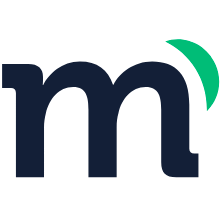# Dynamic Framework
React component framework specialized for financial applications, built on Bootstrap 5 and optimized for micro frontends with Modyo platform.
Version 2.0 Available
Dynamic UI 2.0 brings a new visual language, Lucide icons, and 8 new components.
# Technical Features
# Components
- 30+ React components specialized for banking
- Design system based on Bootstrap 5
- Full TypeScript support
- WCAG 2.1 accessibility integrated
# Architecture
- Micro Frontends with Module Federation
- API-first design
- Lazy loading and code splitting
- State management with Context API
# Technical Documentation
# Architecture
- Technical Overview - Architecture, technologies and design patterns
# Getting Started
- Installation - Environment setup
- First App - Step-by-step tutorial
- Project Structure - Project organization
# Development
- Components - Catalog and APIs
- React Patterns - Hooks and patterns
- API Integration - Backend connectivity
- Widgets - Modular components
- Experiences - Pre-built templates
# Customization
# Modyo Integration
Dynamic Framework is automatically included when creating applications with Dynamic Minimal Theme in Modyo. See customization guide for UI customization.
# Installation
# Modyo CLI
npx @modyo/cli@latest get dynamic-react-base-template my-app
cd my-app
npm install
npm start
# CDN
<!-- CSS -->
<link rel="stylesheet" href="https://cdn.jsdelivr.net/npm/@dynamic-framework/ui-react@1.27.0/dist/css/dynamic-ui.css">
<!-- JavaScript (optional) -->
<script src="https://cdn.jsdelivr.net/npm/@dynamic-framework/ui-react@1.27.0/dist/js/bootstrap.min.js"></script>
# NPM Package
npm install @dynamic-framework/ui-react
Requirements:
- Node.js v20+
- NPM 10.x+
For React component integration, see React guide.
# Technical Resources
# Documentation
- Storybook Components (opens new window) - Interactive catalog
- API Reference (opens new window) - API documentation
- NPM Package (opens new window) - Package registry
# Development Tools
- Modyo CLI (opens new window) - Command line tool
# Technical Support
- Support (opens new window) - Technical support
# Technology Stack
- React: 18+ with Hooks and Suspense
- TypeScript: Full static typing
- Bootstrap: 5.3+ customizable
- Build Tools: Webpack 5, Vite support
- Testing: Jest, React Testing Library
- Linting: ESLint, Prettier
